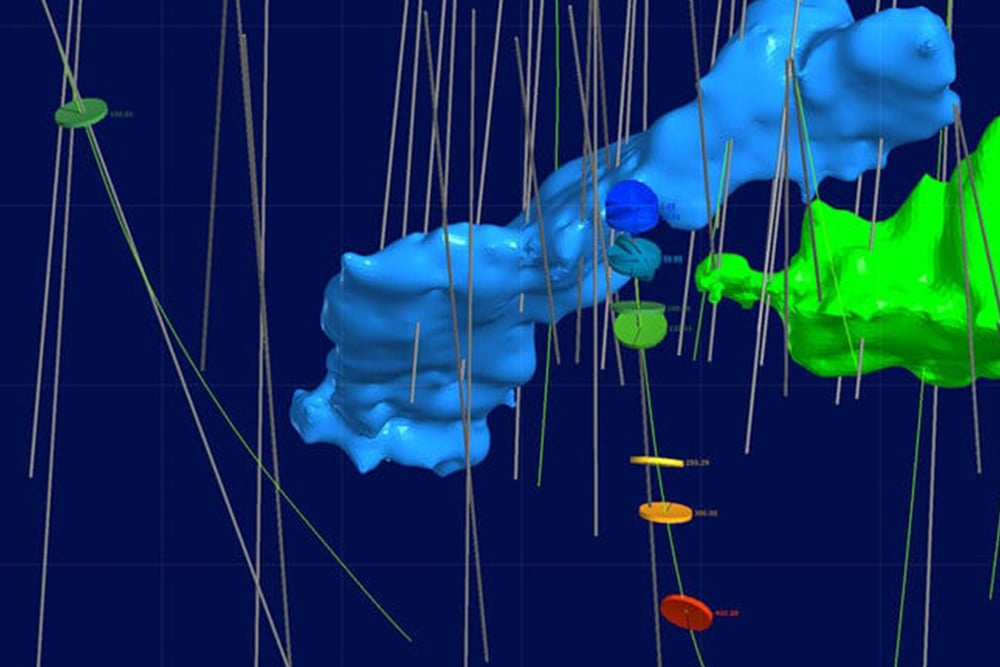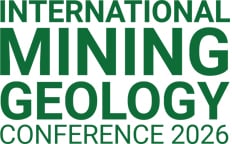Seequent: Data integration and technology for enhanced collaboration

Image: Seequent
Driving productivity in mining: Data integration and technology for enhanced collaboration
Today, mining processes are more technologically advanced and data intensive than ever before. The mining industry is rapidly evolving, with the integration of data and advanced modelling techniques ushering in a new era of collaboration and efficiency across the mining value chain.
But with more data, people, and resources at their disposal, geological teams encounter a major challenge — how to collaborate effectively.
Traditionally, geological workflows have often been marred by isolated functions and fragmented groups operating in silos. This lack of transparency has hampered productivity, costing mining companies valuable time and money in the process.
Here, we take a look at how you can use modern technologies, processes, and workflows to enhance your mining productivity, rather than scupper it, as well as some of the tools you need to drive your projects forward effectively and efficiently.
Breaking down silos for better collaboration
Mining technology has ushered in an era of detailed data acquisition, from LiDAR scans to 3D imaging, promising benefits including enhanced grade control, reduced costs, and increased productivity.
But integrating these digital workflows company-wide is proving challenging for many mining organisations.
The current landscape sees many mining companies purchasing technologies from various vendors, leading to compatibility issues, the emergence of silos, and disjointed workflows. Industry-wide standardisation hurdles further complicate the adoption of unified digital workflow solutions.
So how can these hurdles be overcome?
At the heart of any successful ore extraction lies collaboration.
Collaboration
When we talk about collaboration, we don’t just mean hopping on a Zoom call or Teams meeting and discussing an update to a model.
Collaboration enables dynamic updates by users, driving a single source of truth and a full audit trail for transparency and accountability. Users are always kept in the know through automated notifications, so every person on a project knows the exact progress, in real time.
Geologists in exploration and production must form a symbiotic relationship, merging their expertise to unravel the complexities of ore bodies. This requires seamless workflows that integrate diverse data sources and technologies.
Imagine real-time updates and insights on ore body dynamics through IoT data seamlessly feeding into continuous modelling processes from face mapping. This integration not only streamlines operations — it also ensures a smooth handover to production engineers, optimising productivity from extraction to mill recovery and minimising any uncertainty.
But there is one major obstacle that stands in the way of this progress — people.
Geological teams might resist these changes. This resistance often comes down to factors including concerns about data quality, which may cause teams to maintain the status quo. This often results in teams choosing to retain inefficient workflows, rather than embracing new ones.
Overcoming this resistance requires robust personal interaction and comprehensive support from mining executives.
And it’s worth the effort.
Mine automation in material movement like load, haul, and dump, for instance, has been introduced into workflows, and is already paying dividends.
But the smarter, faster and seamless geoscience automation that should be integrated within these workflows is still lagging behind.
With the right collaboration, and the right support from mining executives in supporting the role of automation in geoscience workflows, we can implement automations effectively — and maximise ore extraction in the process.
Digital workflow integration is advocated for performance enhancement in mining operations. By embracing new technologies, mining companies can not only work harder but also much smarter.
This also emphasises the need for collaborative partnerships to overcome industry challenges.
“High-performing operations are enabled through partnerships of like-minded innovators working together to solve real-world mining challenges.” - Pieter Neethling, Segment Director of Mining Operations, Seequent
How can Seequent help?
Traditional workflows often constrain geologists, but innovative tools like those offered by Seequent offer dynamic flexibility.
Mining companies today no longer look at software in silos, but instead as snapshots of a much larger picture. This makes Seequent’s connected workflows vital for aiding near-real-time modelling, and for providing key, up-to-the-minute insights for more informed decision-making.
Leapfrog Geo, for example, enables dynamic multisystem workflows, integrating 3D photogrammetric imagery data from Imago with geological modelling techniques. Meanwhile, MX Deposit captures and stores blast hole and channel samples and underground drilling data for integration into grade control models.
These integrated programs allow for continuous updates to geological models and grade control models, managed efficiently through platforms like Seequent Central.
Remove silos, improve mining productivity
By breaking down silos and fostering integrated workflows, mining enterprises can unlock new levels of productivity and efficiency, propelling the industry towards a digitally transformed future.
The crucial role of data governance
Modern mining is a complex ecosystem, where various technologies converge. But one fundamental yet often overlooked pillar of this ecosystem is data governance.
Traditionally, geologists have been confined to system-dictated workflows and spent a significant portion of their time on data management tasks. Proportionally, geologists have historically spent the largest chunk of their time on manually preparing, checking, ingressing, and validating data.
Today, geologists are changing the paradigm, keen to spend more time on improving their analysis, gaining deeper insights, and validating their models to be more effective.
But robust data governance has become even more important as mining companies increasingly adopt digital workflows — and the enormous amounts of data that they need to manage and analyse — to enhance operational efficiency.
Data governance is paramount in geoscience as it ensures the reliability, integrity, and usability of geological data throughout its lifecycle.
It also ensures an improved connection between exploration and production. Data governance for exploration data can help ensure insights are passed down the lifecycle all the way through to the mine geology and production stages.
Robust data governance practices are essential not just for facilitating effective communication and model-sharing between teams and stakeholders, but also for ensuring compliance with audit requirements, bolstering trust in decision-making processes.
Today, the vision for mining operations is an open, cloud-based environment that seamlessly integrates data, services, and applications in real time. Such an ecosystem empowers stakeholders with access to the most up-to-date information, making agile decision-making processes and operational excellence much easier to achieve.
“Within an open cloud-based environment of solutions connected through seamless integrations, mining companies will be able to bring together data, services and applications in real time.” - Alex Boucher, Technical Solutions Director, Seequent
How can Seequent help?
Data governance is vital in all mining projects, particularly those involving grade control. Seequent’s Grade Control solutions revolutionise mine geology workflows by offering rapid model updates, maximising ore location, quantity, quality, and value predictions, promoting integration, and enabling agile decision-making.
By integrating implicit modelling, mine geologists can make in-the-moment decisions, optimising production efficiency and minimising waste. The solutions facilitate collaboration by integrating various geoscience data types, ensuring all teams work towards common goals. Agile testing of projections allows for quick adaptation of short-term mine plans, allowing mine geologists to seize opportunities and mitigate risks effectively.
By maintaining data integrity and facilitating collaboration, Seequent's solutions ultimately boost revenues through optimised production while demonstrating commitment to sustainability.
With improved data governance, mine geologists can achieve higher productivity and profitability, aligning with industry standards and minimising environmental impact.
Prioritise data governance to boost workflow effectiveness
By placing a strong emphasis on data governance and embracing digital workflows, mining companies can navigate the complexities of their operations more effectively.
From ensuring data integrity to enhancing safety and optimising performance, robust data governance practices serve as a catalyst for driving productivity and sustainability across the mining industry.
Automation accelerates processes and boosts productivity
To keep up with the pace of technological advancement — and ever-growing competition — mining companies are pushing the envelope further and further in the pursuit of sustainable and efficient mining operations.
Seequent in depth
In our upcoming webinar, “Unlocking strategic insights by optimising your mine geology workflow”, we will explore the pivotal role technology plays in both optimising mine performance and ensuring efficiency, and cost-effectiveness.
We will also deep-dive into how mining companies must embrace cutting-edge technologies to meet the ever-growing demand for metals and critical minerals.
When it comes to the future of mining geology workflows, another major trend stands out: the growing reliance on autonomous systems.
Automation, powered by machine learning (ML) and artificial intelligence (AI), is already transforming mining geology workflows for the better, propelling processes forward and amplifying productivity to unprecedented levels.
Rapid and automated data integration, particularly in critical areas such as grade control, equips mining professionals with the agility they need to adapt to conditions quickly and decisively.
“For any drill hole, pit, ‘face’, blast, or stockpile sample, what’s important is getting this data via seamless integration into a continuous model. This integration helps mining teams gain real-time insights for real-time decision-making.” - Pieter Neethling, Segment Director of Mining Operations, Seequent
There are many more benefits of automation technologies for mining companies — from streamlining tasks and expediting decision-making to optimising resource allocation — which foster sustainable growth in today’s fiercely competitive landscape.
In short, these innovations — spanning data collection, analysis, and decision-making — are set to profoundly redefine productivity in mining operations. By leveraging the wealth of data at their disposal, mining companies can gain invaluable insights into optimising grade control, reducing uncertainty, and enhancing operational accuracy.
However, one crucial factor is to ensure that AI and ML algorithms are deeply rooted in geologically accurate principles. This requires geologists, software engineers, and data scientists to work closely together to ensure the algorithms’ calculations are geologically sound. This protects the integrity of geological interpretations and decisions, preventing potential inaccuracies or misinterpretations that could compromise operational efficiency and safety.
Without applying these contextual geological principles, or measuring freshly available data, there comes a very real risk of misclassification and delayed decision-making, which could potentially undermine operational efficiency and profitability.
For example, efficient resource allocation is at the crux of maximising ore extraction while minimising waste handling — a balancing act that is made possible through the strategic utilisation of predictive analytics.
Today, there is growing demand for semi-automated workflows that can rapidly generate short-term models, while still ensuring accuracy and reliability in capturing short-range information through close-spaced drilling activities.
These models are built using close-spaced drilling data to capture short-range information and an existing foundation model of lithology, mineralisation, and alteration.
With an abundance of data available — including blast holes and advanced infill drilling data — short-term modelling stands to benefit from machine-learning modelling approaches.
Additionally, there is increasing demand for faster decision-making and reduced model times, aiming to transform medium-term model generation from days or weeks to minutes or hours. This problem cannot be solved with existing modelling workflows alone.
By anticipating fluctuations in ore quality and deposit characteristics, mining operations can proactively adjust short-term schedules, not only spending time wisely but ensuring that resources are used optimally and the risks of unwanted waste handling are greatly reduced.
The potential cost and resource savings resulting from these proactive measures are immense, promising substantial gains in operational efficiency and profitability.
How can Seequent help?
Effective collaboration between stakeholders is the cornerstone of success in modern mining operations. However, traditional communication methods often impede collaboration, leading to delays in decision-making and reporting.
By ensuring timely access to data insights, mining companies can empower decision-makers at all levels, facilitating faster decision-making and uncovering new opportunities for innovation and growth.
Integrate automation into workflows to improve cost-effectiveness
Automation has become a catalyst for revolutionising mining operations, driving sustainable growth and efficiency, and fostering innovation in an increasingly competitive environment.
Embracing automation technologies and combining the power of autonomous systems with geologically accurate AI and ML algorithms is the key for mining companies to confidently navigate the complexities of the modern mining landscape.
With this well-managed data to hand, combined with geologically accurate AI and ML algorithms, it also gives geology teams a better standpoint during mine management meetings. It not only helps them to convey to operation leaders exactly what the real-time mining forecast looks like, but also understand any reasons for under- or overperformance compared to previous forecasts.
Looking towards the future of mining productivity
The convergence of data integration, advanced modelling, and automation is reshaping the future of mining productivity.
Prioritising collaboration, connected workflow, establishing robust data governance frameworks, and embracing emerging technologies such as AI and ML are the key steps mining companies must take to unlock unprecedented levels of efficiency, productivity, and profitability across the entire value chain.
This integrated approach not only streamlines operations — it also ensures accuracy, agility, and sustainability.
As mining enterprises continue to adapt and innovate, they are poised to lead the way towards a future where productivity in mining reaches new heights, driving sustainable growth and success in an ever-evolving industry landscape.
Meet us at IMG 2024
We’re delighted to announce that Seequent is a platinum sponsor for this year’s AusIMM International Mining Geology Conference. Here’s what we have in store for you at Booth 31 and 32:
- Live and interactive demos of our data solutions, including MX Deposit, Imago, Central, and Leapfrog
- A sponsored session on risk and resource management
- A Get Chunky trivia challenge — put your geological software knowledge to the test for a chance to walk away with a scrumptious New York-style cookie from Get Chunky
- A sneak preview of our free web application designed to inspire the next generation of geoscientists, Visible Geology.

